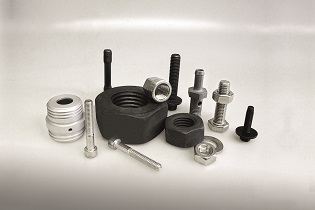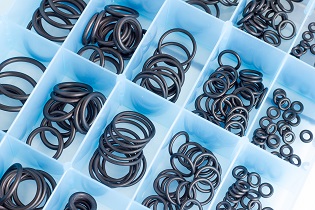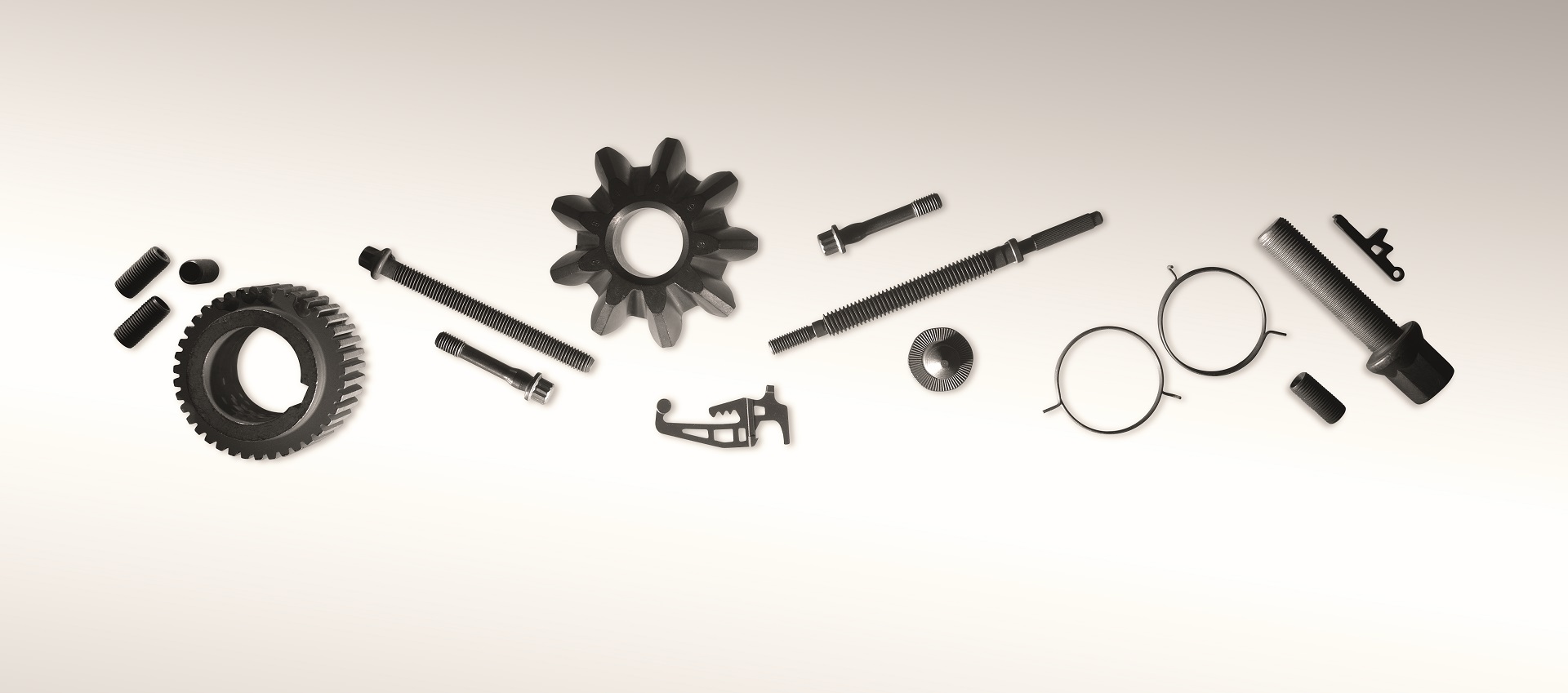Solid film lubricants
The dry lubrication
In many cases where dry lubrication is required, solid film lubricants are the best choice. The solid film lubricant coating has proven its worth millions of times and nowadays constitutes a reliable, almost indispensable design element.
Increased automation in production and assembly makes solid film lubricants ever more important. They provide many components with dry, efficient lubrication and, compared with conventional lubrication using greases or oils, allow designs to be simpler. They assist in the running-in of heavy-duty machine elements, simplify installation and, in many cases, guarantee maintenance-free lifetime lubrication.
Benefits of solid film lubricants:
- dry and clean lubrication
- resistance to contamination
- protection against corrosion
- lubrication under extreme conditions (high and low temperatures, vacuums)
- suitability for the surface finishing of a large number of materials (metals, plastics, elastomers, ceramics, glass, etc.)
Benefits of using solid film lubricants:
- facilitate the assembly and disassembly of fitted parts
- improve the running-in performance of heavy-duty components
- make maintenance-free lifetime lubrication possible
- prevent the occurrence of stick-slip and thereby contribute to a reduction in noise
- attain precise coefficients of friction with low scattering for threaded connections
- guarantee additional safety through emergency lubrication in combination with oil and grease lubrication

Range of capabilities and structure
of solid film lubricants
Solid film lubricants allow the coating and storing of lubricated parts ready for assembly. They are extremely resistant to pressure and temperature. They are also resistant to ageing and at the same time clean to handle.
Structure and composition of solid film lubricants
Solid film lubricants are dispersions of selected solid lubricants in solutions of organic or inorganic binders in solvents. Apart from the main components – binders, solid lubricants and solvents – solid film lubricants can also contain functional additives such as corrosion inhibitors or UV-active additives.
- Solid lubricants: Molybdenum disulphide, graphite, polytetrafluoroethylene …
- Binders: Epoxy, polyurethane, amide-imide, silicone resins …
- Solvents: Organic solvents, water …
- Additives: Corrosion protection, wetting, preservation, UV detection …
Functionality of solid film lubricants
After drying and curing solid film lubricants form a dry lubricant film of a few microns reliably adhering to the base material. This film acts as a friction- and wear-reducing, separating and lubricating layer between the friction partners.
A smoothing of the surface of the solid film lubricant initially takes place as a result of the relative movement of the contact partners. By means of a partial separation of lubrication-efficient components from the solid film lubricant layer a so-called transfer film is formed on the counterpart. The buildup of a lubricating film between the sliding partners leads to a reduction of the coefficient of friction. The solid film lubricant offers the advantage of dry, and therefore clean, lubrication and in many cases can replace the use of greases or fluid lubricants, particularly where slow sliding movements are involved. In addition, solid film lubricants can be used in combination with fluid or pasty lubricants. In such cases they improve the running-in lubrication during initial operation and ensure separation of the metallic friction partners in solid body contact at very low speeds or during downtimes.
Industrial application of solid film lubricants
Solid film lubricants are used in many different industrial applications, for the coating of metallic parts or for use on elastomers and plastics.
SOLID FILM LUBRICANTS FOR METALS

Solid film lubricants can be used on metallic components in almost all industrial sectors. Major users are above all the automotive industry, mechanical engineering and the bolt and screw industry.
With regard to the functionality of the solid film lubricant, a distinction is essentially made between a coating with lifetime lubrication, running-in lubrication or a pure assembly aid.
In addition to the optimisation of the coefficient of friction and wear, the demand for corrosion protection is frequently an important aspect where metallic components are concerned.
Coating of threaded connections
The friction coefficient of a threaded connection is extremely important for its function. The correct lubrication must already be taken into consideration when designing a threaded connection. The aim is to achieve the ideal tightening behaviour, i.e. the interaction between tightening torque and friction force, as well as the resulting clamping force. The tightening behaviour is usually tested on special screw test rigs. In addition to conventional lubrication with oils or greases, FUCHS offers numerous products from the field of lubricating films and solid film lubricants for the coating of threaded connections.
The use of solid film lubricants on threaded connections results in the following benefits:
- specific adjustment of the coefficient of friction with low scattering range
- dry, technically clean coating
- wide operating temperature range
- high resistance in contact with technical media
- loosening of threaded connection after thermal load
- repeated assembly
- corrosion protection
Coating of metal components for lifetime lubrication
The individual components of many assemblies are no longer accessible for re-lubrication after installation or re-lubrication is generally not requested. In such cases, the solid film lubricant coating must function for the entire lifetime, either in continuous or in intermittent operation. In addition to the low coefficient of friction, an adequately high resistance of the solid film lubricant is then especially important. Such requirements apply, for example, to:
- bolts
- hinges
- springs
- lock components
- magnetic anchors
- shafts
- bearing elements
- spindles
- pistons
- disc springs
The suitability of a solid film lubricant for the lifetime lubrication of the component is often determined prior to its use, based on tribological test rig results as well as the customer”s special assembly test rig results. Using modern tribological test rigs the solid film lubricant coatings can be tested under different stresses, speeds, geometric fastening conditions and climatic conditions.
SOLID FILM LUBRICANTS FOR ELASTOMERS AND PLASTICS

Solid film lubricants for elastomer seals – clean and flexible
The necessity for lubricating seals (O-rings) for ease of assembly, as well as the reduction of friction in dynamic processes, is beyond question and in the past was primarily effected by classic lubricants (oils, greases). In recent years dry lubrication with solid film lubricants has acquired increasing significance in this field. Compared with conventional lubrication, the application of a solid film lubricant has above all the advantage that, by coating mass-produced parts, it is possible to dispense with the preliminary treatment (oiling, greasing), which is often carried out by hand, during installation of the component.
Easier assembly is no longer the only requirement on the solid film lubricant coating of O-rings. Subject to the application case, a coating must also fulfil various general conditions. In technical applications, such as in the automotive industry the coated O-ring frequently comes into contact with operating fluids. In other cases a coloured coating is required or the possibility of use in contact with drinking water or food.
Solid film lubricants for plastic parts – low-friction and noiseless
There are just as many possibilities to use solid film lubrication with plastics as there are in the coating of metals. For example, solid film lubricants reduce the assembly forces for plug-in connections in the furniture industry, they allow low-friction movements of plastic guides and protect switching mechanisms in household appliances against wear. In addition to their friction and wear-reducing properties, solid film lubricants from FUCHS on plastics also contribute to reduction of noise. Especially in car interiors, material combinations of different materials such as plastics, elastomers or synthetic leather often generate noise due to vibration when driving as a consequence of so-called “stick-slip” phenomena. This can be eliminated in advance by the application of a solid film lubricant.
Solid film lubricants from FUCHS LUBRITECH offer the ideal solution for elastomers and plastics
- pre-coating of mass-produced small parts
- dry and clean lubrication
- separation during automated feeding thanks to non-stick effect
- low assembly forces due to reduction of coefficient of friction
- avoidance of damage during assembly
- high resistance to wear and low coefficients of friction in use
- noise minimisation for the most diverse material combinations
- resistance to technical media
- identification by coloured coating is possible

Contact us
Phone:
+420 603 899 911
E-mail:
Pavel.Broz@fuchs.com

